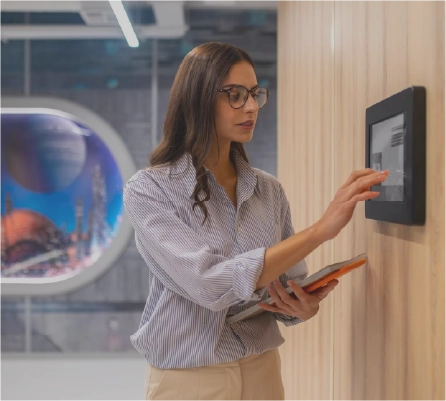Project Management
Malls Bet Big On AI To Drive Customer Engagement
- Kevan Jacob
- May 21, 2021

Shopping malls are the heart and soul of communities because they are the foundation of retail economies. However, due to a lot of new global trends being discovered, it is causing malls to change the role they play in people’s lives. They are no more primarily about shopping. Nowadays, when a customer visits a mall, they are looking for an experience that will go well beyond just traditional shopping.
A recent survey showed that 66% of customers say shopping technologies and innovations improved their experience. The next level of in-store and seamless shopping experiences in malls would only be possible with personalization, automation, and increased machine efficiency.
AI is one of the most crucial technologies used in shopping malls, as it is capable of solving problems, performing human tasks, learning from past experiences, managing consumer traffic patterns, and adjusting to new inputs by combining large sets of data with a fast processor and detailed algorithms. Integrating AI in malls can help collect data from the customers to provide better insights. There are many aspects where AI can be used in malls.
Improved In-Store Experience
Mixed reality (i.e. AR & VR) is definitely the next big thing for shopping malls as they can improve customer experiences and provide a better enegagement. Malls have also started using in-store kiosks so that customers can use them to check the availability of the products in the store and then proceed accordingly. These interactive kiosks can also have a virtual avatar, giving customers hyper-personalized product recommendations in real-time, to suggest what they can buy.
In 2020, 20% of companies had adopted augmented, virtual, and mixed reality solutions in their digital strategies. AR makes shopping more accessible for businesses. Augmented reality has the potential to revolutionize mobile shopping by bringing products to life in front of you through 3D models. It allows users to interact personally with offline, or online products that can be scanned using AR technology. Check out the Back to the Jurassic and Traveller AR – Pradera Concepcion in Guatemala!
Shopping Mall Robots
Combining AI, voice technology, and full-perception facial recognition, humanoid robots set up on different floors of malls can talk to customers and help them find discounts, new products, and store locations. These robots leverage AI to recommend the relevant brands, stores, products, and coupons intelligently to meet customers’ needs. One can interact with the robot through one-to-one chat via text, voice, and pictures.
Companies like eBay use Shopbot to advise their customers for better shopping. North Face helps its customers find the perfect pair of clothes by asking them personal questions. Cheetah Mobile’s AiM Robots have reached a daily average of 62.4 million customers, and each customer stays with the AiM Robot for 70 seconds.
Cashier-Free Stores
Staff can walk around the store and assist with customer’s issues so that they can focus more on the other areas of the store without the need to handle the checkout process. Customers can add items into their cart and leave stores without going to a checkout counter. Automatic door access, cameras, and computer vision lets customers check out without the need of a cashier.
Conversational and contactless commerce has played a significant role in uplifting the fortunes of multiple retail brands. Amazon is a leading player in using this technology to grow cashier-free stores around the world. They have a project plan for creating 3000 plus cashier-free stores by 2021.
Prediction of Demand in Shopping Malls
Demand forecasting helps estimate the total sales and revenue for a future period of time. The use of AI in shopping malls can provide advanced analysis to optimize and predict the correct allocation of merchandise from time to time.
It can also accurately predict future demand by understanding customer’s choices, the context between products in an assortment, and how demand for a product is affected by a greater assortment around it. Point of sale customer order data is used for short-term forecasting. The on-demand economy is estimated to reach a whopping $435 billion in the year 2021 with an annual growth rate of 49%.
Inventory management
AI can be a great help to increase the accuracy of inventory counts that are either missing items or products that are in great demand. It improves the ability to locate items within a store, it can also detect price tags that need to be changed for a product that is no longer sold. This minimizes human effort and things can be done in a much more organized manner, as it gives retailers the ability to recommend actions and even act independently or with human approval by suggesting how to reduce working capital tied up in excess stock.
Product categorization in Shopping Malls
Artificial intelligence can smartly classify products, sort merchandise, and services. It can categorize more than a million commodities from numerous retailers and stores and sort them into product categories for display so that customers who are looking for a certain type of item can find them with ease. Stores can upload an image of the products with no description because computer vision and machine learning can recognize these items in pictures, place items in the correct product category, and then suggest a price. It helps customers find the exact item that they are looking for within seconds.
Stores like Sephora collect certain data to produce products that are calibrated according to the specific skin tones of the customer, with the formula updated monthly.
Though the world of retail is changing dramatically, malls still play a pivotal role in urban and suburban environments. Mall operators are starting to expand their horizons of what a mall can be by leveraging the power of AI.

